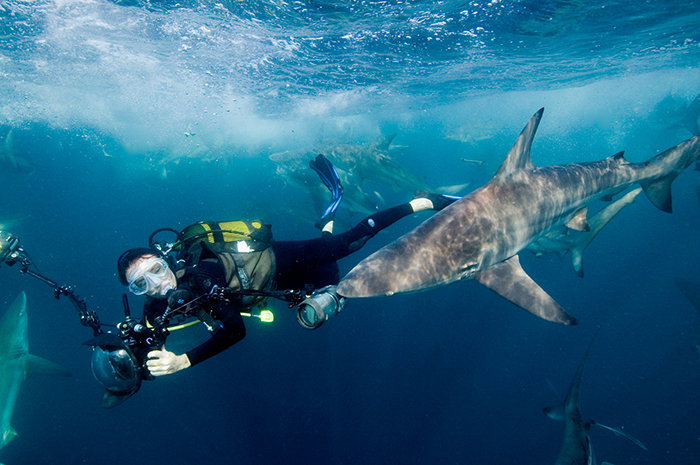Wildlife wars: how can humans and dangerous species live together?
08 October 2014 | Story Verity Leatherdale/University of Sydney. Distributed by Phys.org.
"In Australia the culling of sharks and the killing of crocodiles after human attacks are instances of the 'wildlife wars' taking place worldwide." So said Professor Justin O'Riain, a behavioural ecologist who presented a Sydney Ideas talk in September at the University of Sydney, on the background to this conflict and ideas for resolving it.
Professor O'Riain, from the Animal Demography Unit in the Department of Biological Sciences at the University of Cape Town, has worked on a wide variety of southern African wildlife species, including mole-rats, porcupines, meerkats, wild dogs, baboons, lions, leopards, jackals, seals and great white sharks.
"We try and understand the drivers of conflict by looking at the behaviour of the animals in relation to their environment, and then proposing solutions. That requires translating science into wildlife management policy to try to solve the ongoing, unavoidable battles between humans and wild species,' said Professor O'Riain. A decade ago, human'“baboon conflict in Cape Town was chronic, adversely affecting the lives and livelihoods of thousands of people, and almost the entire population of baboons.
"Management was reactionary, and the public irate '“ either at being raided, or because retributive killings of baboons were so commonplace. We committed to providing the city managers with data to make informed decisions; and to their credit, they '“ together with a dedicated team of public representatives '“ have delivered a thriving baboon population and a much happier public, with both improved lifestyles and property prices," Professor O'Riain said. Other challenges have included encounters between humans and sharks at popular beaches in Cape Town. "Here, sound behavioural research by my PhD graduate Dr Alison Kock, together once again with innovating city managers, has paved the way for an alternative to culling with shark nets and drum lines," Professor O'Riain said.
Early detection using 'shark spotters' serves to reduce the spatial overlap between great white sharks and recreational beach users during the summer months when the sharks come inshore. "Beach users can assess the relative risk based on a series of flags and sirens that alert them to current shark presence, or their likelihood of being detected. If people choose to swim when the risk is high, then they are making a conscious choice; and because the risks of an incident are so low, some 99.99 percent of people feel it is the right one."
"In addition, exclusion nets (versus the culling nets in use throughout much of Australia) offer families a fun day at the beach with no threat of an encounter with sharks.
"These are all simple and yet effective solutions that allow both top predators and other wildlife to persist in close proximity to humans," Professor O'Riain said.
 This work is licensed under a Creative Commons Attribution-NoDerivatives 4.0 International License.
This work is licensed under a Creative Commons Attribution-NoDerivatives 4.0 International License.
Please view the republishing articles page for more information.










